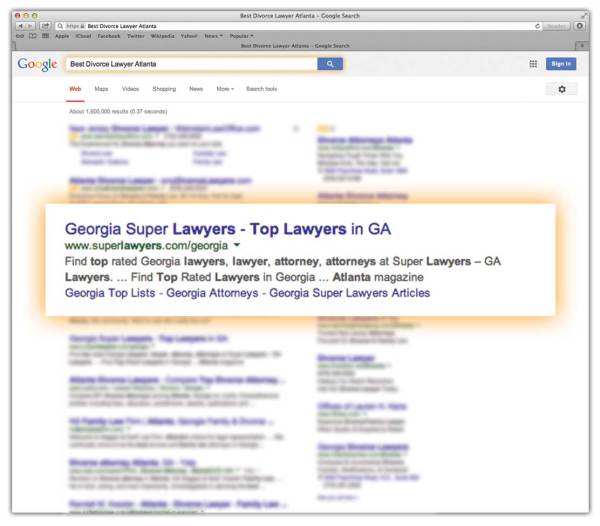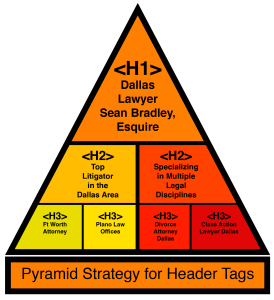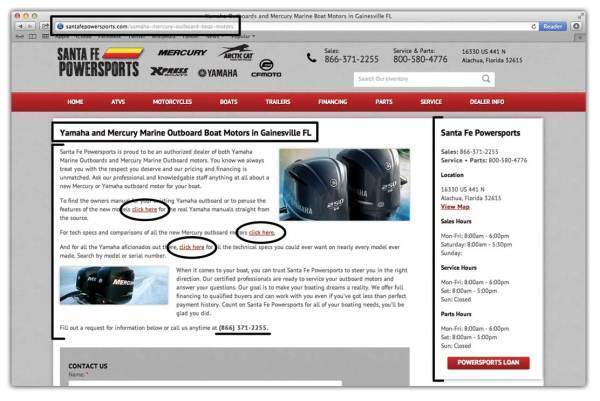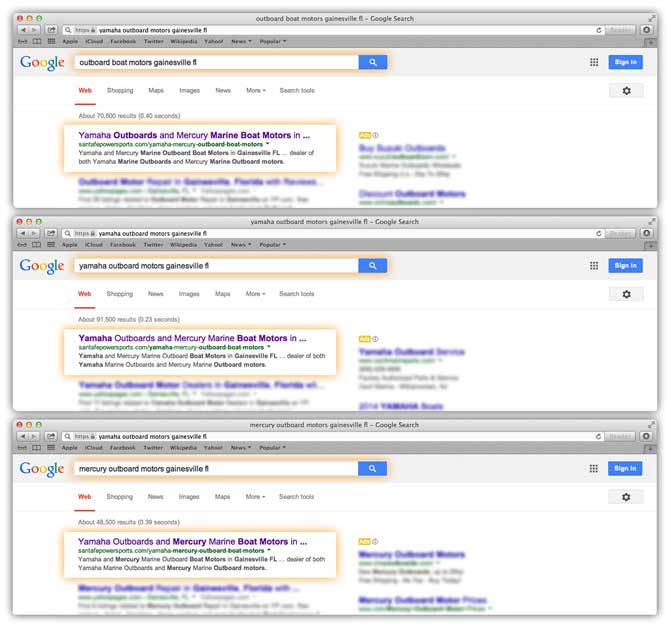2.1a Tactics for Onsite SEO
OVERVIEW
There are 5 main aspects to a properly developed and designed onsite SEO strategy. Below please find a detailed break down of each section and how you can begin implementing them into your current plan.
1. Domains
Your domain name serves many purposes including traffic generation and branding. In addition, and more importantly, there is SEO relevancy and SEO value in the domain that you choose; so, choosing the perfect domain is vital for your SEO strategy.
The Perfect Domain Must Have:
• Create site URL Guidelines:
Beware of the URL format, and stick with it throughout the entire website.
• Keep it simple:
Keep it as brief as possible, so it’s easy to share with others
• Be descriptive, not technical:
It’s annoying to have a URL with symbols, or a bunch of numbers. Pick a URL that is simple, and memorable. If your URL contains multiple words, consider separating them with a hyphen
• URL’s are case sensitive:
NEVER allow your URL to have uppercase letters
• Beware of subdomains:
Subdomains may not be treated as equally as primary domains when it comes to link value.
• Geo-targeted domains:
Applying geo-targeting in your URL might make it easier for visitors to identify your location and brand your business
Exact Match Domains
These are domains that are typically made up of two to three keywords that match exactly to the Google search query. With exact match domains, it is important to optimize your website as well, and to be willing to spend a little extra money to acquire a top-level domain.
Domain Software
There are a handful of resources dedicated to assisting you in choosing the best domain name. Here are some examples of technological software to help you find the perfect domain name for you.
• www.moz.com
• www.wordtracker.com
• www.adwords.google.com/KeywordPlanner
2. Title Tags
 Title tags are one of the most vital aspects of SEO because they define the title of a webpage. The title tag is meant to give a useful and specific description of what type of content is on the web page.
Title tags are one of the most vital aspects of SEO because they define the title of a webpage. The title tag is meant to give a useful and specific description of what type of content is on the web page.
Create Value
• SERP’s
• Relevancy
• Browsing
Use Keywords
Using keywords in your title tags will help with your search results. If someone searches for a specific keyword, and that keyword is in your title tag, Google will highlight that keyword in the title tad in the search results. In return, you will get a higher click-through rate, which is an integral aspect of ranking highly.
Two main components of title tags:
• Search Engine Optimization
• Click-throughs
Best Low Effort Practices:
• Consider readability and emotional impact
• Be cognizant of your title tag length
• Make sure you place the keywords close to the start of the title tag
• Remember your brand is important
• “Exact Match” title tags are bad unless it’s the name of the website
• Use natural language
Including A Phone Number
Using a proper phone number in a title tag is important. Some people use Google like a phone book. If they search a keyword, and a phone number appears in the title tag, they can call the number for more information. It is also important that you take the time to make each title tag unique for each page.
3. Heading Tags
Heading tags are used to identify separations between the heading text of a page and its content. These heading tags are a very important part of the on-page SEO elements because they represent sections of the website content, and in turn help Google understand the relevance of the content on the page compared to the heading.
 Pyramid Strategy
Pyramid Strategy
It is important that you create a proper hierarchy when creating header tags.
<H1> tag: you should only have one H1 tag, and it should consist of more than one keyword; a keyword phrase
<H2> tag: This tag should consist of two to three key phrase tags
<H3> and <H4> tags: these tags can have even more keyword phrases.
Meta-description
Meta-description is the second most important focus when it comes to SEO on a web page. The point of a mea-description isn’t primarily used for SEO, though; it is used for obtaining click-throughs. It is defined as “Hyper Text Markup Language,” or, “HTML” attributes that explain in specific detail the contents of web pages.
Be Aware:
• Make sure all of your pages have a different meta-description
• Do not use double quotations!
4. Linking
External Links:
External links could be an outside website or resource that links back to your website. Links from large, established sources will have the best SEO value for your website. External links are important for 2 main reasons:
1. Relevance
2. Popularity
Internal Links:
The level of credibility a site possesses is necessary in getting a website ranked on Google. There are many different ways you can use internal links on your website:
• Website Navigation
• Links in the content, anchor text
• Links on the pages
• Site map
Remember:
• No more than 5-6 links in your content
• Keep links under 100 on any page
• Links in the body of your content will have higher relevancy
• Link from one section of your site to another section as long as its relevant
• Add links to old or new content as an update to an article or blog post
Keep in mind:
Only 5 percent of people go past the first page of Google. It is important for you to organize your content properly, and then link! Below is an example of properly optimized content.
5. Content
 Content is king! Google wants to provide people with exactly what they search; therefore you need to provide that in your content in order for Google to think you are what they need. It is important for your content to be both relevant, and unique. You cannot cheat Google, so make sure that all of your content is fresh. Plagiarism is not okay! Here is some software to help monitor your content for plagiarism.
Content is king! Google wants to provide people with exactly what they search; therefore you need to provide that in your content in order for Google to think you are what they need. It is important for your content to be both relevant, and unique. You cannot cheat Google, so make sure that all of your content is fresh. Plagiarism is not okay! Here is some software to help monitor your content for plagiarism.
• grammarly.com
• plagtracker.com
• smallseotools.com/plagiarism-checker (This one comes with these SEO tools)
• Article Rewriter
• Key Position
• Pagerank Checker
• Backlink Maker
Your content needs to:
• Describe your website or web page
• Describe your product and/or service
• Describe what your value package proposition (why buy from you)
• Detail your menu
• Answer questions proactively
• State problems and solutions
• Include keywords
• Domain
• Title tag
• Meta-description
• Heading tags
• Alt tags
• Videos
• Geo-targeted locations
• Targeted prospects/audience/demographics
 Keyword Density Analyzer Tool:
Keyword Density Analyzer Tool:
• tools.seobook.com/general/keyword-density/
• keyworddensity.com
